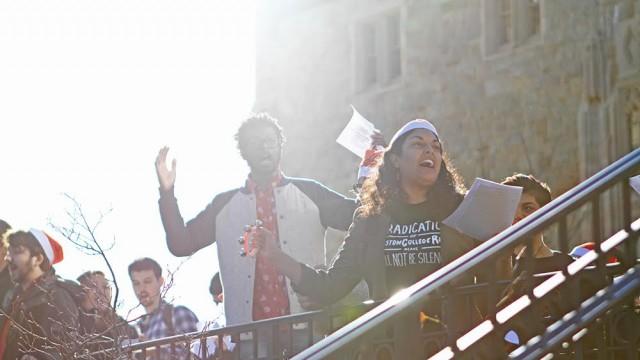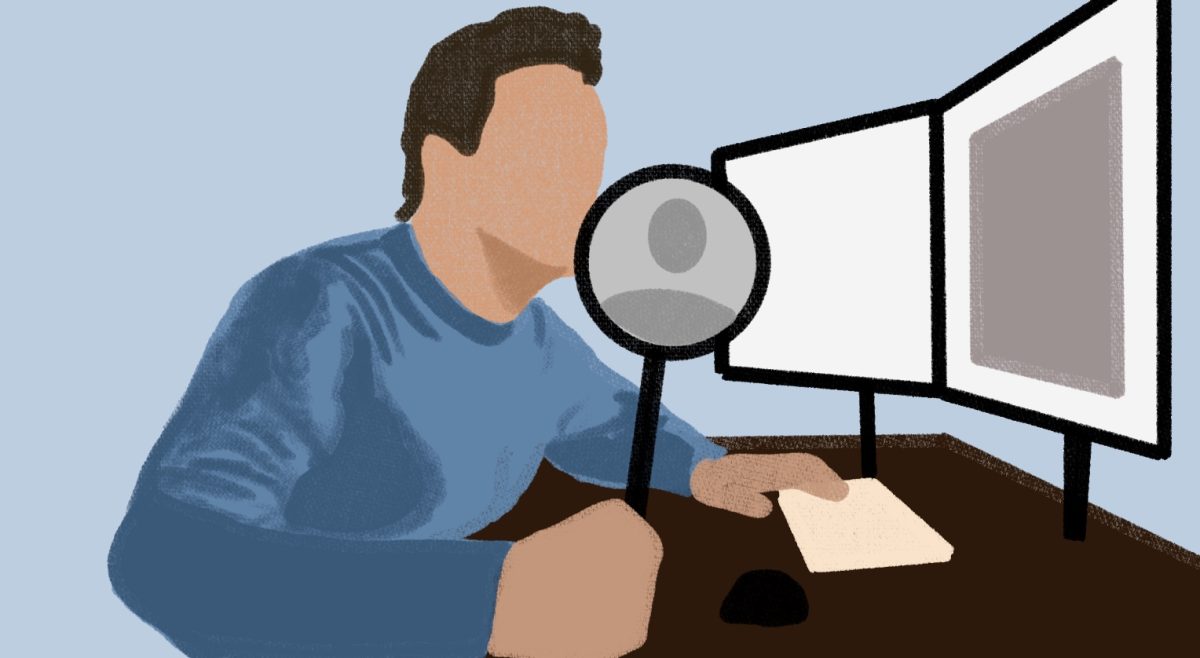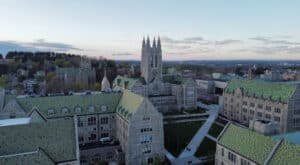On Friday, Eradicate Boston College Racism and the Undergraduate Government of Boston College both attempted to address issues of racism at BC. Eradicate began its protest, titled “Walking Through a White Man’s Wonderland,” in Gasson Hall, where the Board of Trustees was gathered for a luncheon. The protest is part of the group’s “Twelve Days of BC Racism” campaign. After being denied entry to the room where the Board was convened, the protesters began to sing Christmas carols in the main atrium of Gasson. The lyrics had been altered to express the group’s growing discontent with the Board’s lack of a plan with regard to racism. They gave a list of demands to Dean of Students Thomas Mogan, who was standing in the atrium. He said he would pass the demands on to the Board. These demands include adding three members of color—faculty, staff, and student—to the Board and allowing them to vote. They also hope to hold a forum in which their demands can be addressed by the Board, creating a dialogue between the Board and Eradicate. The protesters exited Gasson and marched across campus, singing their carols. The demonstration was not registered or approved by the administration.
That same afternoon, Thomas Napoli, president of UGBC and MCAS ’16, Olivia Hussey, vice president of UGBC and MCAS ’17, and Afua Laast, UGBC vice president of diversity and inclusion and LSOE ’16, attended the Board of Trustees meeting to discuss institutional racism and inclusivity. They showed a slideshow with a timeline of race-related events at BC, personal narratives from students of color about their experiences with racism on campus, and facts taken from the April 2012 Campus Climate Survey. UGBC is working on a proposal, which has not yet been made public, and is planning on releasing a plan of action to address racial issues on Jan. 19. They are also staying away from the term “eradicate racism” due to its provocative connotations. The goal of UGBC and its plan of action is to create an inclusive environment at BC and help make every student feel like they have an equal home on campus.
Both of these groups addressed the same general issue but went about it in very different ways. By working along administrative channels, it seems UGBC treats the Board as part of the solution to race issues at BC, not as the problem. Eradicate’s protest, with the use of Christmas carols and its unregistered status, has the possibility of placing the Board in a defensive stance. Eradicate’s list of demands would open up a better line of communication, especially if the forum they asked for comes to fruition. But, based on the administration’s previous response to protests, it seems unlikely that Eradicate’s method of communication will directly prompt positive change.
While UGBC appears more successful in presenting its issues to the administration and moving forward with a plan of action, it is important to note that UGBC has a checkered history on following through with proposals. This past year has seen UGBC and the administration propose and work on changes to the student guide, and students have yet to see many of the proposed content changes. If this meeting with the Board is to mean anything, UGBC and the administration must work together and follow through on their proposed changes.
The students in Eradicate were able to bring to light important problems of institutional racism, and have raised awareness of the problem within the student community. Yet, at least on this campus, success comes from a combination of collaboration and awareness. The protest’s effectiveness in raising awareness of problems cannot do it all. Perhaps UGBC’s more conciliatory approach will help with attacking the problems Eradicate has brought attention to.
Correction: the article incorrectly referred to UGBC’s actions as a protest. The article has since been updated to reflect that fact that it was not a protest.
Featured Image by Julia Hopkins / Heights Staff













Cedrick Simmons • Dec 6, 2015 at 11:34 pm
“But, based on the administration’s previous response to protests, it seems unlikely that Eradicate’s method of communication will directly prompt positive change…Yet, at least on this campus, success comes from a combination of collaboration and awareness. The protests effectiveness in raising awareness of problems cannot do it all.”
What support exists for these claims? History at BC and theory about social change from most of the scholars I know on this topic (especially on campus) suggests the opposite of what these two major claims suggest. It seems like an attempt to portray UGBC and Eradicate as opposing rather than complimentary methods for the sake of making a provocative talking point. However, when one looks at any of the major changes that happened at BC, and large scale changes in this country regarding racism, you would be hard pressed to find an example of change that wasn’t preceded by protests, direct action, riots (in many cases), repression from stakeholders that then led to conversations with intra-institutional supporters of antiracism (in this case it would be UGBC).
Also, this wrongfully claims that both EBCR and UGBC participated in “protests” which is not the case if they had a formal presentation to the Board.
Again, framing the approaches as opposing rather than complimentary seems to support the interests of administrators and folk who want to maintain an oppressive status quo rather than those who are attempting to enrich and add nuance to a dialogue about how we can acknowledge, address, and dismantle oppression on campus especially for marginalized folk on campus and the student body this paper reports to inform. Not gonna lie, this is slightly disappointing from the Heights.